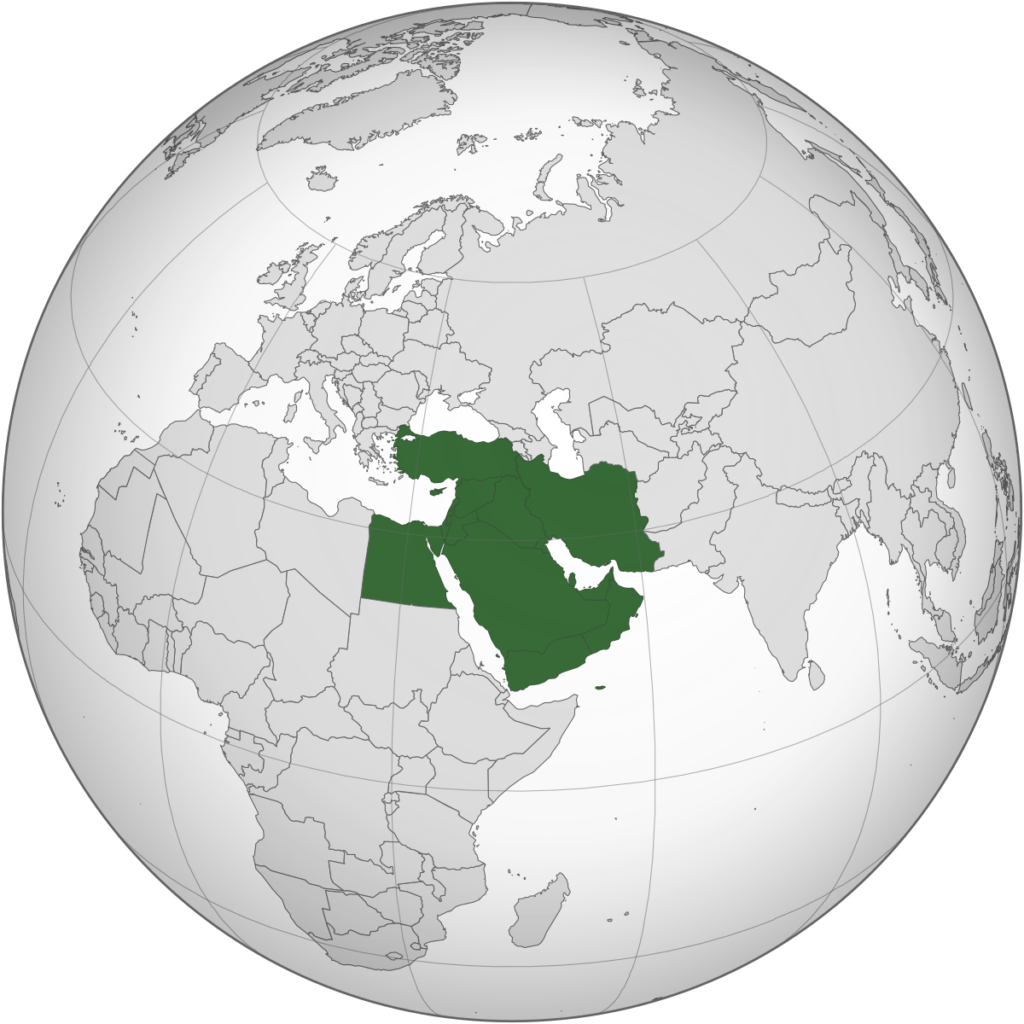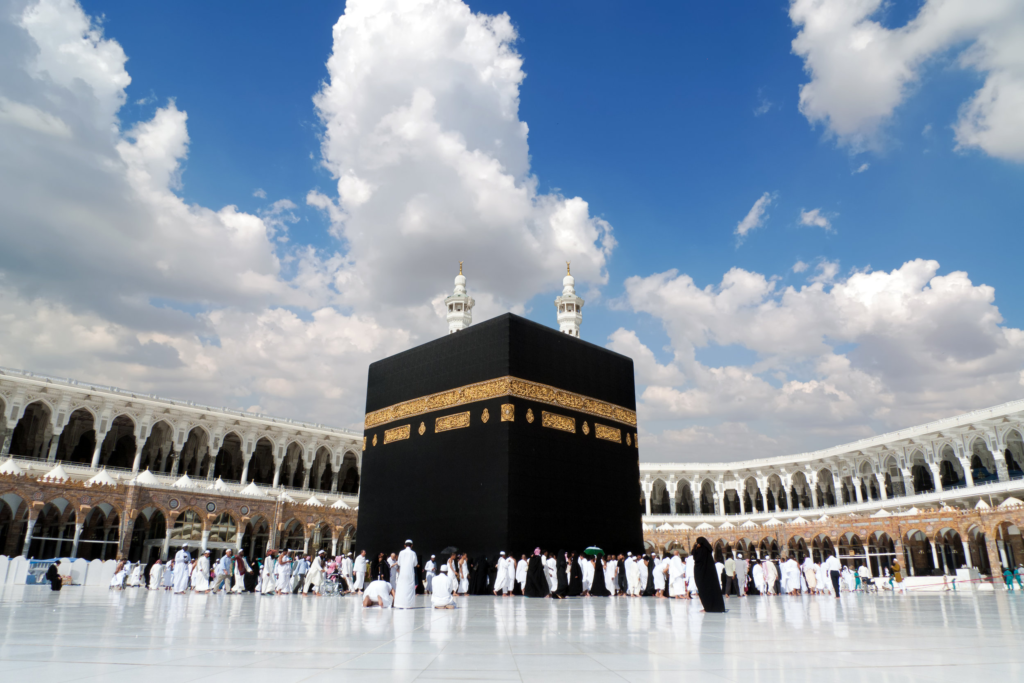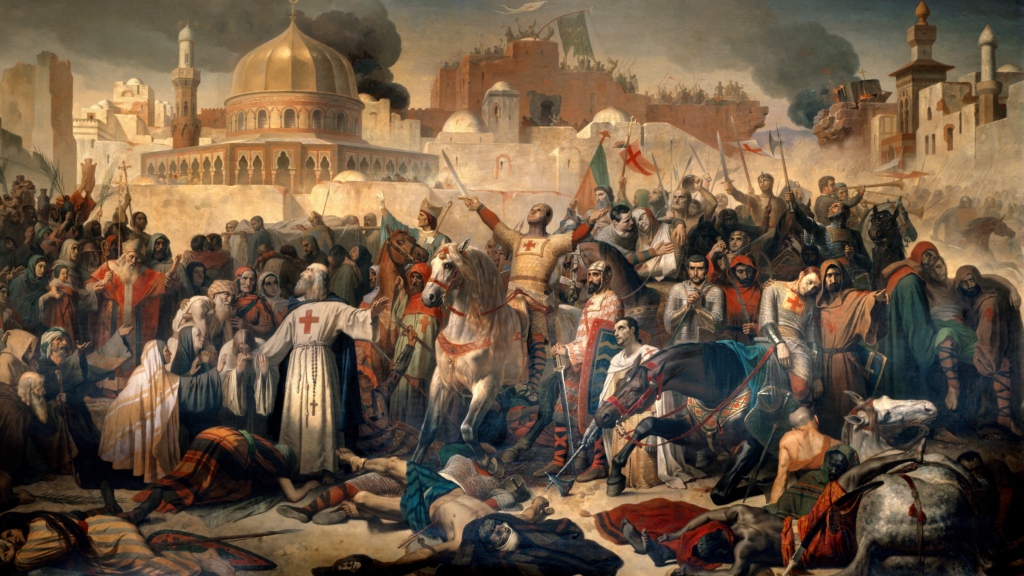x min read

The Middle East
Introduction
Dar al-Islam is also just code name for “the world of Islam”. What you might find surprising is that despite the collapse of the most significant Muslim empire at the time, Islam was still spreading like wildfire. It was reaching South Asia, North Africa, and even some of West Africa (but not just yet).
This one’s another big one, so let’s get through it.
Thematic Focus + Historical Thinking Skill + Learning Objective
As described by the Collegeboard, the thematic focus of this subunit deals with “the development of ideas, beliefs, and religions illustrates how groups in society view themselves, and the interactions of societies and their beliefs often have political, social, and cultural implications.”
Connecting this with what you’re about to read, Islam was a massively significant idea during this period that defined the behavior, actions, and beliefs of societies who converted to Islam.
Historical Thinking Skill
The historical thinking skill of this subunit is Developments and Processes. Pretty much, your job is to explain the developments and processes involved in XYZ. In this context, that’d be Islam. We’ll complete this activity later.
Identify and describe a historical concept, development, or process.
Learning Objective
The learning objective is as described:
Explain how systems of belief and their practices affected society in the period from c. 1200 to c. 1450.
Remember, we’ll complete both of these activities later. First comes the knowledge.

The Beginning Of Dar al-Islam
Let’s turn the clock back quite a bit. Islam starts all the way back in the 7th century CE in the Arabian Peninsula when -who is considered- the final Prophet, Muhammad, started receiving revelations from God (Allah) at the age of 40 through the angel Gabriel. Muhhamad was born around 570 CE in Mecca, a city in present-day Saudi Arabia. These revelations, which he continued to spread until his death in 632 CE, are compiled in the Qur’an; Islam’s sacred scripture.
The core teachings of Islam introduced by Muhhamad include the belief in one God (this being Allah), the importance of following God’s commandments as shown in the Qur’an, and the necessity of leading a life that is righteous.
Although Muhammad’s teachings may have been heavily influential and inspiring to many, it was met with loads of backlash and opposition in Mecca. Essentially, before Muhammad spread this idea of there only being one true, real God, close to all people in society worshipped a bunch of “fake” Gods, which was a key part in the economical gain made by the state. As a result, opposition would a rise in Mecca, primarily from the Quraysh tribe to which he belonged. This tribe were custodians of the Kaaba, which at that time housed idols of many gods worshipped by different tribes.
Thus, Muhammad was persecuted in Mecca.
The Hijra
He and his followers migrated to Medina in 622 CE, an event known as the Hijra, which marks the beginning of the Islamic calendar. In Medina, Muhammad established an Islamic state and gradually unified the various tribes under the banner of Islam through treaties and allianes.
Over the course of the next decade, Muhammad consolidated his control over Arabia through a serious of campaigns, both defensive and offensive, against Meccan forces and other Arabian tribes. The most notable one by far was the conquest of Mecca in 630 CE, after which Muhammad’s monotheism became the dominant faith in the peninsula.
Following his death in 632 CE, Islam continued to expand rapdily beyond the Arabian Peninsula under the leadership of his successors, who are known as the Caliphs. The expansion of Islam was made possible through military conquests, trade, intermarriages, and the appeal of the faith itself (signifying its ability to help those who have nothing left to boost themselves up in society; a common thing seen in Buddhist societies for which people could NEVER leave their class in society). Its offer of a more equal social structure compared to existing systems. Another way of converting people into Islam was through sent missionaries into designated locations. Although they were never forced, they were always incentivized.
What Its Teaches Us
What we see from Muhammad’s story, the start of Islam, and its spread is that a) it has come a far way and that b) for it to be as impactful and interconnected as it was then, and as it is today, connectivity had to be at an all-time high. As a result of high rates of connectivity all over the globe, we see not only the explosion of Islam, but also the heavy increase in Christian converts, Buddhist Converts, Daoist converts. Besides just religion is the explosion in culture as a whole.

Analyzing Its Spread
Islam had one of the biggest, if not, the biggest religious spread during this period. Thanks to the networks of exchange, Islam spread faster than anyone could’ve predicted. Let’s analyze the top 3 regions.
#1: Sub-Saharan Africa
In Sub-Saharan Africa, Islam spread primarily through trade, especially along the Trans-Saharan trade routes. Muslim traders and scholars traveled these routes and interacted with the local populations, introducing Islam along with Arabic writing and Islamic culture. Major urban centers, such as Timbuktu and Gao in the Mali Empire, became important centers of trade and Islamic learning.
The influence of Islam grew particularly in the Sahel region and along the East African coast. In the West African empires of Mali and later Songhai, Islam was adopted by rulers and elites initially, facilitating statecraft and diplomacy. The adoption of Islam by important figures, such as Mansa Musa of Mali, enhanced its prestige and encouraged further conversion.
#2: South Asia
What’s most iconic here is the formation of the Delhi Sultanate, established with one of its main purposes to send out missionaries into India and attempt to get as many Muslim converts as possible.
In South Asia, the spread of Islam was significantly facilitated by conquests, particularly by the Ghurid and later the Delhi Sultanate, and then expanding through the activities of Sufi missionaries. The Sufis, known for their mystical approach to Islam, played a crucial role in the spread of Islam by adapting their teachings to the local cultural contexts, thus appealing to the local populations.
How Did Sufi Missionaries Get Converts?
Sufi missionaries were highly effective in spreading Islam due to their inclusive, mystical approach to religion that emphasized personal experience of the divine and universal love. They adapted their teachings to local cultural contexts, often incorporating elements familiar to the local population, which made the religious transition smoother for new converts.
For example, upon the many attempts that there were to convert Buddhists and Hindus in South Asia into Islam, the most popular choice was to present Sufism instead of Islam itself, as it appeared more attractive to those who were willing to convert. This includes adapting Buddhist practices and traditions into their religion.
The ones that converted the most were by far those of the lowest class in society. Due to the principle that one would stay in their spot in societal social structure, and wouldn’t be able to move unless they died and saw if they had good or bad karma, converting to Islam was the ONLY way for them to live a happy and fulfilling life.
Fun fact: Two missionaries from the Delhi Sultanate that were sent to get Muslim converts from the Vijayanagara Empire did exactly that, and ended up converting back to Hindus.
Life Of A Sufi Missionary
Sufis lived lives of simplicity and service, appealing to the common people and often gaining their trust and admiration. The ones who had these positions tended to have very high levels of charisma. They established lodges or khanqahs, which served as community centers where people could gather not only for religious purposes but also for social support.
This social aspect was crucial, as it fostered a sense of community and belonging. Furthermore, Sufis practiced tolerance towards other religions, which reduced barriers to conversion, making it more appealing to a diverse range of people. Their efforts were particularly successful in regions like South Asia and Sub-Saharan Africa, where their blend of spiritual earnestness and practical community service met the local spiritual and social needs effectively.
Back to the areas of influence, Islam took firm roots in the northern regions of the Indian subcontinent. Cities like Delhi, Lahore, and Dhaka became centers of Islamic administration and culture. The presence of Islam significantly influenced the region’s culture, languages, and political structures, leading to a syncretic culture that blended Islamic and local elements.
#3: South Asia
The spread of Islam to Southeast Asia is primarily attributed to trade. Muslim traders from the Arabian Peninsula and South Asia visited the ports of Southeast Asia, marrying into local families and establishing Muslim communities. The role of Sufi missionaries was also significant here, as they established Islamic schools and shrines, which attracted local populations.
Islam became particularly influential in maritime Southeast Asia, in regions that are now part of modern-day Indonesia and Malaysia. By the 15th century, several important trading ports, such as Malacca and Aceh, had become Islamic sultanates, which served as centers for the further dissemination of Islam throughout the region.
Islam vs. Buddhism vs. Christianity
Foundational Beliefs and Doctrines
- Islam: Founded by Prophet Muhammad in the 7th century CE, Islam is a monotheistic religion that believes in one God (Allah). Key beliefs include the Five Pillars of Islam (profession of faith, prayer, fasting during Ramadan, almsgiving, and pilgrimage to Mecca), the Qur’an as the word of God revealed to Muhammad, and the importance of living a life in accordance with God’s laws as revealed in the Qur’an and Hadith (traditions of the Prophet).
- Buddhism: Founded by Siddhartha Gautama (the Buddha) in the 5th century BCE, Buddhism is not necessarily monotheistic. Its core teachings include the Four Noble Truths (the truth of suffering, the cause of suffering, the end of suffering, and the path leading to the end of suffering) and the Eightfold Path, a guide to behavior for overcoming desire and escaping the cycle of suffering and rebirth (samsara). Enlightenment (nirvana) is the ultimate goal, representing liberation from samsara.
- Christianity: Based on the teachings of Jesus Christ in the 1st century CE, Christianity is a monotheistic religion that centers on the belief in one God and Jesus as his son, the savior of humanity. Key beliefs include the divinity of Jesus, the resurrection, salvation through faith in Jesus, and the Bible as the holy scripture. Practices and beliefs can vary significantly between denominations (e.g., Roman Catholic, Protestant, Eastern Orthodox).
Practices and Rituals
- Islam involves daily prayers, dietary laws (halal), specific funeral rites, and emphasizes community prayers on Fridays. Ramadan, the month of fasting, is particularly significant.
- Buddhism involves meditation, mindfulness practices, monastic traditions, and rituals that vary widely between traditions (Theravada, Mahayana, Tibetan). The emphasis is on personal enlightenment, but also on improving karma through right actions.
- Christianity features communal worship services, sacraments or ordinances (such as baptism and communion), and observance of religious holidays like Easter and Christmas. Prayer, Bible reading, and acts of charity are common practices.
Ethics and Social Teachings
- Islam teaches social justice, emphasizes community and family life, and prescribes comprehensive guidelines covering all aspects of life and interactions. Charity and concern for the needy are significant aspects of faith.
- Buddhism emphasizes ethical living, compassion for all beings, and the development of personal virtues as a way to reduce suffering for oneself and others. Social engagement varies, but all schools emphasize moral precepts.
- Christianity teaches love of God and neighbor, forgiveness, and redemption through Jesus Christ. It often involves communal and societal involvement, charity, and education.
Spread and Cultural Impact
- Islam spread rapidly through conquests, trade, and missionary work across the Middle East, North Africa, and parts of Asia and Europe, influencing legal systems and cultures.
- Buddhism spread initially through missionaries and traders across Asia, deeply influencing cultures, arts, and social systems in countries like Tibet, China, Japan, and Southeast Asia.
- Christianity spread through the Roman Empire and later through colonialism and missionaries into the Americas, Africa, and around the world, significantly impacting Western civilization and beyond.
Cultural Developments & Interactions
One of the key thematic focuses of this topic (out of two) has to deal with cultural developments and interactions. The question here is: how did the development of ideas, beliefs, and religions illustrate how groups in society view themselves?
Let’s explain every single one of those developments and then reach a conclusion.
Development of Ideas & Beliefs
The first thing we see from Islam is religious syncretism. Islam, as it spreads across different regions, often incorporated elements of local religions and customs, leading to the rich cultural diversity that we see in Dar al-Islam. This blending in beliefs helped facilitate the acceptance of Islam and encouraged even further cultural exchange.
What do you mean by “religious syncretism”?
This is an important term that you’re gonna want to be familiar with. So, to quickly clarify it, essentially syncretism refers to the fusing of two religions to form one single religion. As a good example, when Buddhist merchants traveled along the Silk Roads to China, Buddhist and Confucian ideas and beliefs clashed together and formed a new, syncretized religion by the name of “Mahayana Buddhism”; a form a Buddhism that combines ideals from both, and even incorporates multiple dieties.
(continued)
The second thing seen from Islam during this period, which is equally as important as the first one, is crazy advancements in fields like mathematics, astronomy, medicine, and chemistry. Scholars like Al-Khwarizmi and Ibn Sina (Avicenna) not only pushed forward the boundaries of their respective fields but also influenced non-Islamic societies through translations of their works into Latin and other languages.
What Islam empires were especially known for during this time were their contributions to the world. With their help, we were able to master the following inventions/skills:
- Sugeries
- Coffee
- Flying Machine – a real attempt to construct a flying machine and fly
- University
- Algebra
- Optics – a branch of physics that studies the behavior and properties of light
- Music
- Hospitals
It was because of their preserved and shared knowledge that Europe was able to advance as quickly as they did. You might hate your algebra class, but with the knowledge we’ve gained on conducting surgeries and even how to compose and create music, we would not be the same people that we are today. No question.
Developments Of Religions
Islam started with the vision and teachings taught by Muhammad.
However, there’s more context that you might need prior to the exam. Of course, all the of the content below isn’t required, but it does help.
- Qur’an and Hadith: The Quran, the holy book of Islam, and the Hadiths (traditions or sayings of the Prophet Muhammad) form the core of Islamic theology. These texts not only guide religious life but also social and legal norms within Muslim communities.
- Sunni and Shi’a Split: One of the earliest and most significant religious developments was the division of Islam into Sunni and Shia branches. This division originated from a dispute over the rightful successor to the Prophet Muhammad and has led to differing religious practices, legal theories, and political alliances.
- Crusades: A conflict held between the Christians and Muslims for control over Jerusalem; lasted from the 11th to the 15th centuries; consisted of several successful and unsuccessful attempts; led to significant cultural, technological, and economic exchanges; hardened religious identities and animosities but also occasionally fostered respect and knowledge transfer; weakened the Byzantine Empire, altered the political landscape of the Near East, and left a legacy of mistrust and conflict among Christian and Muslim communities
Crusades – Timeline
- Call to Arms: The First Crusade (1096-1099) was initiated by Pope Urban II’s call at the Council of Clermont in 1095. He urged European warriors to aid the Byzantine Empire, which was under pressure from Muslim advances, and to liberate Jerusalem and other holy places from Muslim control.
- First Crusade: Successfully captured Jerusalem in 1099, establishing several Crusader states.
- Second Crusade: Launched in response to the fall of the Crusader state of Edessa in 1144; ended in failure.
- Third Crusade: Initiated after Jerusalem fell to Saladin, the Kurdish leader of the Ayyubid dynasty, in 1187. Led by figures such as Richard the Lionheart of England, it failed to recapture Jerusalem but secured some rights for Christian pilgrims.
- Fourth Crusade: Deviated from its original goal, culminating in the sack of Constantinople in 1204, highlighting the divergent interests and complexities of the Crusades.

Government
We’ve already learned the methods for which the Song Chinese governed their empire. Now, how about Muslim empires, what did they do in comparison?
Shari’a
Sharia law, or Islamic law, is derived from the Qur’an and the Hadiths, which are the sayings and actions of the Prophet Muhammad. It covers all aspects of daily life for Muslims, from personal conduct and family matters to criminal justice and economic activity. Sharia is not just a set of legal rules but a way of life that aims to help Muslims live according to God’s will. It’s applied through a judicial system where judges, known as Qadis, play a crucial role in interpreting and enforcing the laws.
The Jizya
The jizya is a tax that was historically levied on non-Muslims living in Muslim-ruled states. This tax granted non-Muslims protection under the state, exempted them from military service, and allowed them to freely practice their religion. The concept of jizya is rooted in the Islamic principle that all citizens should contribute to the state’s welfare, either through military service or taxation.
For example, if you were a Christian living on Islamic lands, you were bound to pay the Jizya. Similar to the Tribute (Mit’a) system in the Incan Empire, conquered peoples -in this case, those that aren’t of Muslim religion- had to pay a tax to remain conquered. Although they aren’t the same by any means, they do have their similarities.
Local Governance
Local governance in Islamic states often blended Islamic law with existing traditions and customs. Many Islamic rulers retained pre-Islamic administrative structures or adapted them to fit the Islamic legal framework. For example, in areas like the Ottoman Empire, local governance included a system called the millet system. Under this system, religious minorities managed their own communities’ internal affairs according to their religious laws while still adhering to the overarching rules of the empire. This approach allowed for a diverse empire to maintain order and harmony among various religious and ethnic groups. The use of such hybrid governance systems helped Islamic states manage vast and culturally diverse territories effectively.
Military & Conquests
Islamic empires like the Seljuk Empire and the Mamluk Sultanate were known for their immense strength. Seriously, ask any knowledgeable person in world history and they will tell you that the strongest empires between 1200 and 1450 ranked something like this:
- Mongol Empire (no question)
- Mamluk Sultanate
- Seljuk Empire (could also be ranked lower)
Accomplishments/Feats.
Let’s start off with the Mamluk Sultanate. 4 words. They beat the Mongols.
Yeah, I know. Crazy. An empire that actually succeeded in suppressing the Mongols and being able to prevent them from destroying and trashing their empire. This was known as the Battle of Ain Jalut in 1260. They were one of the very few that was able to do this, ever.
The reason behind their strength had to deal with the strength of their empire specifically. As you’ll eventually learn on the Mongols, it was because of the military strategies and techniques implemented by Genghis Khan and Kublai Khan for their ability to conquer all the land that their eyes saw.
Although not as impressive, but still definitely impressive, the Seljuk Turks were successful in their conquest of the Anatolian Peninsula, their success in defeating the Crusaders during the Second Crusade, and their excellent military tactics.
How?
First, Mamluks. Their reason for strength was incredibly creative and genius, but what you also probably and fairly will consider as cruel. Essentially what happened was:
- The Mamluks were originally slave soldiers; many were of Turkic or Caucasian origin, extensively trained in warfare. Over time, they rose to become rulers, forming a militaristic elite.
- Their military system was based on a rigorous training regimen that included horsemanship, the use of the bow, and tactics of hand-to-hand combat. The Mamluks maintained a high degree of readiness and discipline, which were critical to their battlefield successes.
- They were also renowned for their use of cavalry, employing heavily armored horsemen and horse archers who were highly maneuverable.
Next, Seljuks. Although the Mamluks used horsemanship to excel in war, the Seljuks did this on a completely higher and farther level.
- The Seljuks, also of Turkic origin, were known for their skilled use of cavalry, particularly horse archers. Their military tactics often involved using mobility and speed to outmaneuver their enemies, a characteristic of many nomadic Turkic peoples.
- They utilized a feigned retreat, a common Turkic battle tactic, to disperse enemy formations and counterattack effectively.
- The Seljuks established a feudal system known as the “Iqta'” system, where land was granted to soldiers (especially cavalry) in return for military service. This system ensured the loyalty of their commanders and the effectiveness of their armies.
Prompts
#1: Identify and describe a historical concept, development, or process.
Using the knowledge you now have on Islam, the empires in Islam, the ideas and beliefs housed under the world of Islam, and a million other things, you should be easily able to craft an answer. Just think back to the religious developments that we talked about earlier. How did Islam go from a small, localized religion to a large, widespread, global religion that is practiced by 1 billion people today? (of course this still being restricted to the period 1200-1450)
#2: Explain how systems of belief and their practices affected society in the period from c. 1200 to c. 1450.
Islam had an easily identifiable widespread affect all across the regions it spread towards. It brought new people, ideas, technologies, knowledge, traditions, and information. It brought wealth, new opportunities, and help give rise to a new global influence, Islam.
Conclusion
Dar al-Islam, or the world of Islam, is a pretty large world. It’s a pretty large space. Within it, there lies a whole new world that Europe, China, and some of Southeast Asia had no clue of at the time.
If you’re interested in reading about 1.1 East Asia, and mastering the content inside of that post, feel free to check it out here. From now on, no more extremely long posts. Our mission now is to pack only what you need to know for the exam. So, let’s do this.



